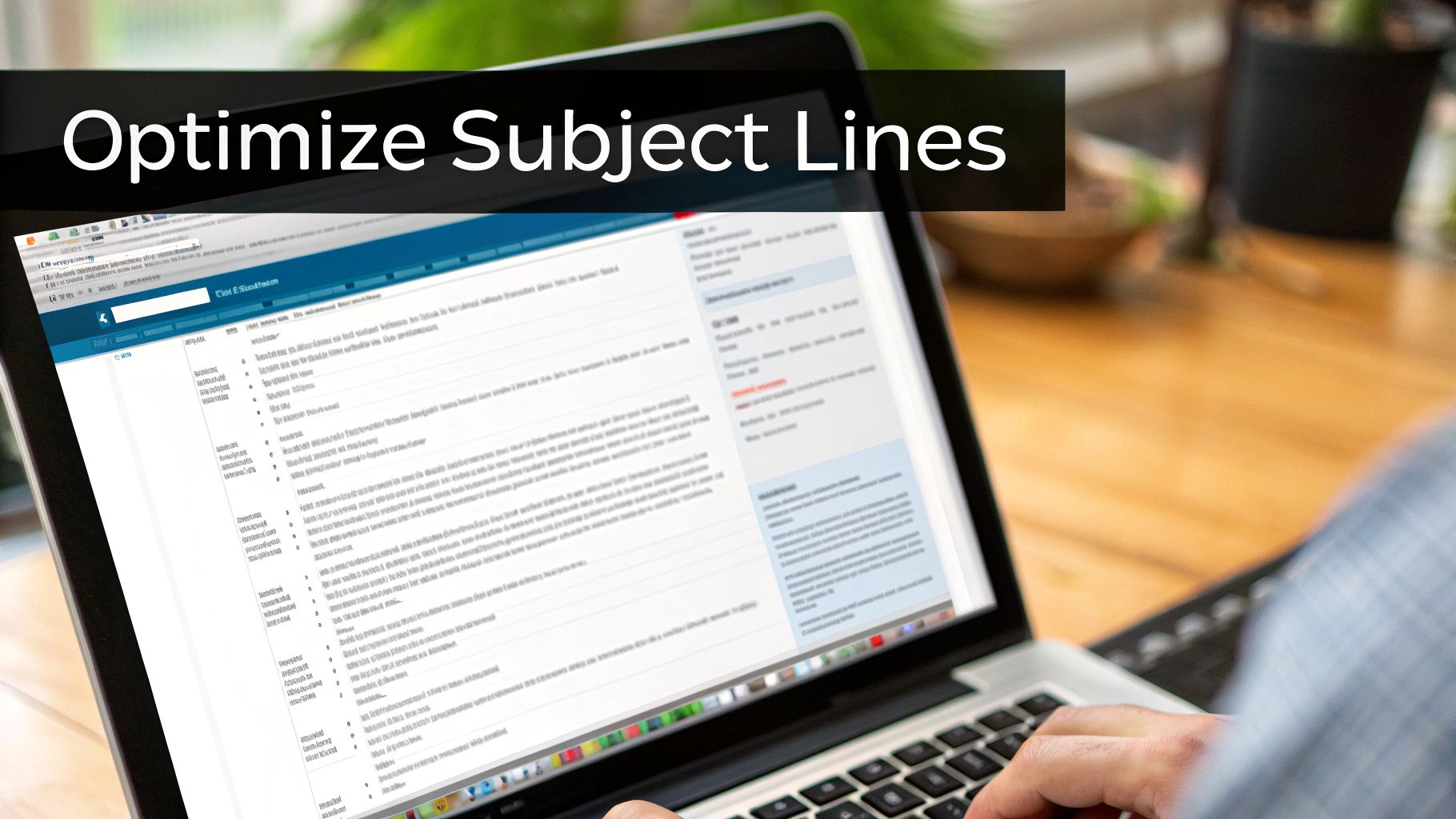
Why Email Marketing Still Dominates Digital ROI

When it comes to getting real results from marketing efforts, email continues to outperform other channels by a wide margin. Despite all the buzz around social media and newer platforms, email marketing remains the most effective way to reach and convert customers. The numbers tell a compelling story about why this tried-and-true method still works so well.
Let's look at the remarkable returns that email marketing delivers. Businesses earn an average of $36 for every $1 spent on email campaigns – that's an incredible 3600% ROI. It's no wonder that 87% of marketers say email is essential to their success. The returns vary by industry though. Retail and ecommerce see the highest ROI at 45:1, followed by marketing and PR agencies at 42:1, and tech companies at 36:1. For more stats and insights, check out the Litmus Email Marketing ROI Study.
Industry-Specific Success Stories
Email marketing works so well because it can be perfectly tailored to different business needs. Retail companies use it to send personalized product recommendations based on what customers have bought before. B2B firms build relationships through helpful content that guides prospects toward a purchase. Want to see more examples? Read about How Email Marketing Benefits Different Businesses.
Measuring and Maximizing ROI
Smart companies go beyond basic metrics like opens and clicks. They use advanced attribution models to track how email interactions lead to sales. This helps them understand exactly how email campaigns drive revenue growth.
With these insights, businesses can fine-tune their email marketing best practices for better results. They discover which customer segments respond best to different types of content and offers. Regular A/B testing of subject lines, email copy, and calls-to-action helps optimize every campaign. The focus stays on continually improving performance and ROI through data-driven decisions.
Mastering Email Personalization Strategies

Gone are the days when adding a first name to an email was enough. Creating truly personalized emails means understanding what makes each subscriber unique and delivering content that resonates with their specific interests and needs. When done well, this personal touch helps build genuine connections that drive better results.
Building a Foundation for Personalized Email
Great personalization starts with gathering the right data about your subscribers. While basics like names and email addresses matter, the real insights come from tracking things like purchase history, website behavior, and past email engagement. This data helps build detailed customer profiles that reveal what truly interests each person.
A clothing retailer can see which product categories a customer browses most often and tailor recommendations accordingly. For instance, someone who frequently looks at dresses will get different email content than someone interested mainly in shoes. This targeted approach transforms generic mass emails into curated experiences that feel personal and relevant.
Dynamic Content and Behavioral Segmentation
Dynamic content lets you customize different parts of an email based on what you know about each recipient. You can swap out product photos, adjust offers, or change entire sections to match their preferences. Taking this further, behavioral segmentation groups subscribers based on their actions.
This means you can send cart abandonment reminders with special discounts to people who left items behind, while giving loyal customers early access to new products. Research shows this works – 80% of marketers report better results from personalized emails versus generic ones according to Shopify's email marketing research.
Predictive Personalization and Privacy
Predictive personalization uses AI to spot patterns in customer behavior and anticipate what they might want next. This helps recommend relevant products before customers even search for them. However, using data this way requires being thoughtful about privacy concerns.
The key is being open about how you collect and use customer information. When subscribers understand the value exchange – their data for more helpful, personalized content – they're more likely to trust your brand. Striking this balance between personalization and privacy builds lasting customer relationships that benefit everyone.
Making Email Marketing Work Smarter Through Automation
Email automation has become essential for successful marketing campaigns. By setting up intelligent automated systems, you can deliver personalized messages at scale while saving time and increasing revenue. The data shows that properly automated emails generate 320% more revenue than manual campaigns.
Creating an Effective Welcome Series
The welcome series is one of the most valuable automated sequences you can implement. Rather than sending a basic thank you email, you can guide new subscribers through a carefully planned introduction to your brand. Include company background, showcase key products, and offer special discounts to immediately engage subscribers and start building a relationship.
Following Up on Abandoned Carts
Abandoned cart recovery emails help recapture sales that might otherwise be lost. When a shopper adds items to their cart but doesn't complete the purchase, an automated reminder can bring them back. Including product images, shipping information, and perhaps a time-limited discount provides extra motivation to complete the sale.
Staying Connected After Purchase
The automation journey continues after the sale through post-purchase engagement. Send automated thank you messages, share product tips and care instructions, or recommend complementary items that enhance their purchase. These timely touchpoints help turn one-time buyers into repeat customers and brand advocates.
Creating Smart Email Flows
The real power of automation comes from building workflows that respond to subscriber behavior. For example, when someone clicks on a specific product link, they can automatically receive more targeted content about that category. This personalization makes every interaction more meaningful and relevant.
Making Automation Better Over Time
Automation isn't a "set and forget" solution – it requires ongoing optimization. Review key metrics like open rates, clicks, and conversions regularly. Use these insights to refine your messaging, adjust timing, and improve workflows. Consistent testing and updates ensure your automated emails continue driving strong results. Learn more about email marketing automation.
Optimizing Email Design and Deliverability

Great email content means nothing if your messages don't reach inboxes or display properly. Making sure your emails look professional and actually get delivered is just as important as writing engaging copy. Let's explore the key elements of email design and deliverability that will help your campaigns succeed.
Designing for Every Device
People check their email on phones, tablets, laptops and desktops. Your emails need to adapt seamlessly across all these screens. Responsive design ensures your messages look crisp and professional whether viewed on a tiny phone or large monitor. For instance, a single-column layout often works better than multiple columns on mobile devices.
Dark Mode and Accessibility
Many people now use dark mode on their devices, so test how your emails appear with both light and dark backgrounds. Consider accessibility too – use clear fonts, good contrast between text and backgrounds, and add descriptive alt text for images. Small changes like these help more people engage with your content.
Authentication: Ensuring Your Emails Arrive
Email providers need to know your messages are legitimate. Setting up authentication protocols like SPF, DKIM, and DMARC acts like a digital signature that verifies you are who you say you are. This boosts your sender reputation and helps keep your emails out of spam folders.
Maintaining a Healthy Email List
Just like weeding a garden, you need to regularly clean up your email list. Remove inactive subscribers and those who mark you as spam. This list hygiene shows email providers that your audience wants your content. As a result, more of your emails will reach active subscribers who actually want to hear from you.
Optimizing Your Sending Infrastructure
The technical setup for sending emails matters more than you might think. Your sending infrastructure includes the servers and systems that deliver your messages. Make sure everything is configured properly and follows best practices. For example, warm up new IP addresses gradually and space out large campaigns to avoid triggering spam filters.
Testing and Troubleshooting
Always test your emails before sending to your full list. Check how they display in different email clients and on various devices. Have a plan ready for common delivery issues like bounces or spam complaints. Regular testing helps catch problems early so you can maintain strong deliverability rates over time.
Creating Compelling Email Content That Converts
Writing emails that get real results requires understanding what actually makes people take action. You need the right mix of useful information and promotional content to keep readers engaged and moving toward your goals. Think of each email as starting a conversation – it should spark interest and make people want to learn more.
Writing Captivating Subject Lines
Your subject line determines whether your email even gets opened. Just like a newspaper headline, it needs to quickly grab attention while staying clear and honest. Using the recipient's name or mentioning past interactions can boost open rates significantly. For example, instead of a generic "New Product Announcement," try "Jason, Here's the Innovation You Asked About." Be careful with creating urgency – it should feel natural, not forced. A/B testing different subject lines lets you find what resonates best with your specific audience.
Structuring Content for Maximum Impact
Once someone opens your email, you need to keep them reading. Structure your content like a well-designed building – start with a solid intro, organize information into clear sections, and end with a strong call-to-action. Break up text with bullet points and images to make it easy to scan. Put your most important points first, since many people skim quickly. This inverted pyramid approach ensures readers catch key messages even if they don't read everything. Learn more in our article about How to Drive More Traffic Using Keywords in Blog Titles.
Crafting Effective Calls to Action
Your call-to-action (CTA) needs to clearly tell readers what to do next. Whether you want them to visit your site, download something, or make a purchase, make the CTA stand out visually and keep the language simple and action-focused. Use phrases like "Shop Now," "Learn More," or "Get Your Free Guide." Limit yourself to one main CTA per email to avoid confusing readers. Think of your CTA as giving clear directions to help readers take the next step.
Tailoring Content to Different Email Types
Each type of email serves a different purpose. Welcome emails focus on building trust and setting expectations. Promotional emails highlight product benefits and special offers. Regular newsletters aim to provide value and maintain relationships over time. Match your content style to what makes sense for each type of message. You might find this helpful: How to Drive More Traffic Using Keywords in Blog Titles. Having templates for different email types helps maintain consistency while saving time.
Measuring Success and Driving Continuous Improvement

Sending emails is just the first step – understanding their real impact helps you improve and get better results. While metrics like opens and clicks matter, what really counts is how your email campaigns help achieve your business goals. Let's explore how successful companies measure and improve their email marketing programs.
Beyond Opens and Clicks: Measuring True Engagement
Open and click rates only tell part of the story. For example, if you get lots of opens but few clicks, your subject lines might be working but your content needs work. What matters more are actions that drive business results – website visits, purchases, event signups, and other conversions. Tracking these conversion metrics gives you a much clearer picture of your campaigns' true impact.
Implementing Meaningful Testing Programs
Testing is essential for getting better results over time. A/B testing lets you try different versions of elements like subject lines or calls-to-action to see what works best. Start with one element at a time – try different send times, email lengths, or content formats. Small changes can lead to big improvements when you test consistently.
Interpreting Data and Taking Action
Having data is useful only if you act on it. Review your campaign results regularly to spot trends and opportunities. For instance, if certain subscriber segments consistently ignore your emails, you may need to adjust your content or targeting approach. Then test those changes to see if engagement improves. Want more marketing strategy tips? Check out How to master a small business marketing strategy.
Advanced Techniques for Optimization
Top performing email programs use sophisticated tools to get even better results. Predictive analytics helps anticipate what subscribers want. Behavior analysis reveals how people interact with your emails. These insights lead to better segmentation and more relevant content that drives real business results.
Building Your Own Optimization Program
Creating an effective optimization program takes work but pays off. Start by choosing key metrics that align with your business goals. Set up regular reporting to track progress. Make testing a habit – try new approaches and measure the results. Keep refining and improving over time.
Ready to take your email marketing to the next level? Visit Jason Yormark for expert guidance and resources to help grow your business.


Leave a Reply